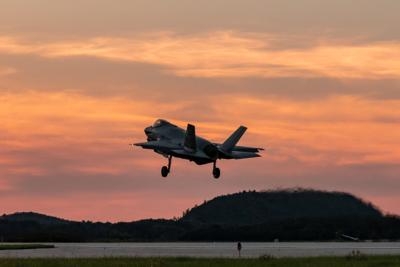Removes Initial Height Requirement For Officer Aviators
As part of the Air Force’s on-going effort to encourage a more diverse pool of applicants to pursue careers in aviation, the minimum height requirement for officer applicants who wish to fly has been removed as of May 13. While still preserving safety of flight, the policy adjustment prevents initial applicants who are below 64 inches or above 77 inches in height from requiring an accessions waiver.

“We’re really focused on identifying and eliminating barriers to serve in the Air Force,” said Gwendolyn DeFilippi, assistant deputy chief of staff for manpower, personnel and services. DeFilippi, who chairs the Department of the Air Force Barrier Analysis Working Group, explained, “This is a huge win, especially for women and minorities of smaller stature who previously may have assumed they weren’t qualified to join our team.”
With the removal of the blanket height standard, the medical and operations communities will apply an anthropometric screening process to individual applicants for placement in an aircraft they can safely fly as they pursue a rated track.
“Studies have shown that women’s perceptions about being fully qualified for a job makes them less likely to apply, even though there is a waiver option,” said Lt. Col. Jessica Ruttenber, Air Force mobility planner and programmer and team leader on the Women’s Initiative Team who led the height standards adjustment effort. “Modifying the height standard allows the Air Force to accommodate a larger and more diverse rated applicant pool within existing aircraft constraints.”
Under the previous Medical Standards Directory requirement, the height requirement to become an Air Force pilot was a standing height of 64 inches to 77 inches (5’4” to 6’5”) and a sitting height of 34 to 40 inches. Although most height waivers were approved, the previous restriction eliminated approximately 44% of the U.S. female population between the ages 20 to 29.
“Historically, most of our aircraft were engineered around the height of an average male, not females,” Ruttenber said.

According to the Department of Health and Human Services Anthropometric Reference Data for Adults, United States, 2007–2010, the average height for U.S. females aged 20 and over is 63.8 inches across all ethnic groups. In contrast, the average height for U.S. males aged 20 and over, across all ethnic groups, is 69.3 inches.
“While most height waivers were approved under the old system, feedback indicated the entire waiver process served as a barrier, which negatively impacted female rated accessions,” said Lt. Col. Christianne Opresko, branch chief on the Air Force’s Air Crew Task Force and an aerospace physiologist. “It’s hard to determine how many women did not previously apply due to their perception of not being fully qualified or having to pursue a waiver.”
The WIT is an all-volunteer team, serving as influential advocates on topics that influence women’s propensity to serve in the Air Force. WIT members work toward creating a Total Force where all Airmen can advance to their maximum potential, regardless of gender.
“This doesn’t happen without the hard work and dedication of Maj. Chandra Fleming, Maj. Andrea Harrington and Capt. Lauren Daly, who played major roles in studying the engineering factors that might present barriers to rated accessions applicants,” Ruttenber said. “Our medical and training teams with the Surgeon General, as well as Air Education and Training Command and Nineteenth Air Force helped make this adjustment possible.”
The WIT is one of five teams within the Department of the Air Force Barrier Analysis Working Group, which was created for the purpose of analyzing anomalies found in civilian and military workplace policies, procedures and practices. DAFBAWG teams are dedicated to identifying and removing potential barriers to equal opportunity.
(ANN Salutes Dan Hawkins, Air Education and Training Command Public Affairs for the story).



 Airbus Racer Helicopter Demonstrator First Flight Part of Clean Sky 2 Initiative
Airbus Racer Helicopter Demonstrator First Flight Part of Clean Sky 2 Initiative Diamond's Electric DA40 Finds Fans at Dübendorf
Diamond's Electric DA40 Finds Fans at Dübendorf ANN's Daily Aero-Term (04.23.24): Line Up And Wait (LUAW)
ANN's Daily Aero-Term (04.23.24): Line Up And Wait (LUAW) NTSB Final Report: Extra Flugzeugbau GMBH EA300/L
NTSB Final Report: Extra Flugzeugbau GMBH EA300/L Classic Aero-TV: 'Never Give Up' - Advice From Two of FedEx's Female Captains
Classic Aero-TV: 'Never Give Up' - Advice From Two of FedEx's Female Captains







